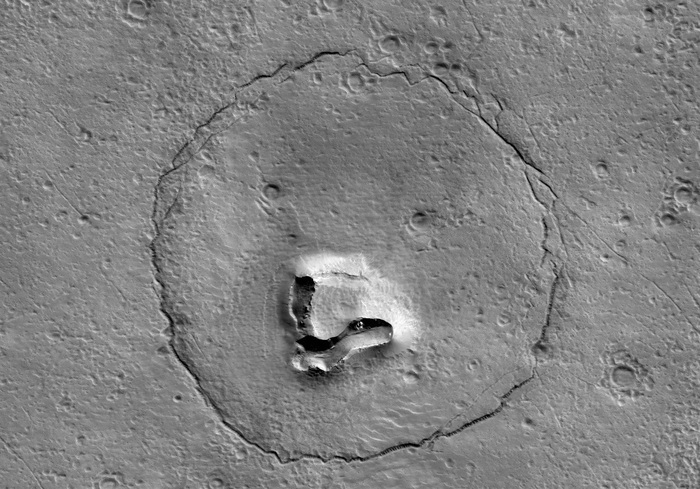
Two eyes, nose, and droopy mouth: It really looks like he’s seeing a bear’s muzzle, in the strange geological formation captured on Mars by NASA’s Mars Reconnaissance Orbiter (MRO). The image was posted by the University of Arizona (responsible for the HiRISE tool that made the snapshot) and immediately invaded social media by making use of pareidolia, or the mental process that leads us to recognize familiar faces and shapes in landscapes or inanimate objects.
The diameter of the giant bear’s muzzle is about two kilometers, and it was photographed last December 12 by the Mro spacecraft while it was flying over the red planet from a height of about 251 kilometers. The image intrigued astronomers at the University of Arizona, who competed to try to understand what might paint such a shape on the planet’s surface.
The most likely hypothesis is that it is a collapsed hill in the center of a large crater.
“There is a mound with a V-shaped collapse structure (the nose), two fossae (the eyes), and a circular fracture pattern (the head),” says HiRISE chief scientist Alfred MacEwen. “The circular pattern of the fracture could be due to sediment being deposited on a buried impact crater. Perhaps the nose is a volcanic or mud vent and the sediment could be lava or mudflows?”
Reproduction is reserved © ANSA Copyright


